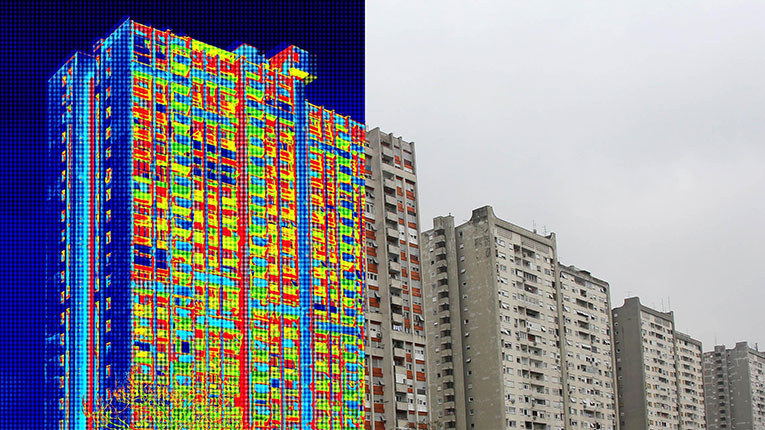The renovation rate of buildings in Romania remains very low, despite the huge need to increase their energy performance, say EPG officials, coordinators of the Efficient Romania program.
In Romania, 8 out of 10 buildings (77%) need energy renovation, being built before 1980, in the absence of energy efficiency standards for the building envelope. Barriers to in-depth renovations include limited information on the stock of buildings, a lack of understanding of energy consumption and potential savings, as well as a shortfall in the labor market. At the same time, the challenges lie in the lack of incentives for energy renovation, difficult access to financing products, as well as the low mobilization of private financing.
“In the long run, we must enter that area of market and private participation in building renovation investments, otherwise we have no chance to achieve our renovation targets. This is the real long-term challenge and we still have a lot of work to do,” says Radu Dudău, director of Energy Policy Group and coordinator of the Efficient Romania project.
“Our commitment to energy efficiency is essential, because we see enormous potential in terms of energy efficiency in buildings in Romania. The focus we put is on schools,” says Christina Verchere, CEO of OMV Petrom, the official sponsor of the Efficient Romania project.
The building sector in Romania covers approximately 45% of total energy consumption. In order to achieve the energy efficiency objectives and targets set by the national and EU strategy documents, the building fund in Romania needs an increased energy performance, as shown by EPG, in a recently published study.
In the residential sector, most buildings were built between 1961 and 1980, in the absence of energy efficiency standards for the building envelope. About 53% of residential buildings were built before 1970 and over 90% before 1989, with an energy performance between 150 and 400 kWh/ sqm/ year. At the same time, in Romania, one in seven families is facing serious housing problems, most often due to the poor quality of the walls, floors and window frames, according to the National Institute of Statistics.
Public administration, educational and commercial buildings account for about 75% of non-residential energy consumption, each with 20-25% of the total. Schools are the largest consumers of energy (354 kWh/ sqm/ year), in other sectors consumption ranging from 200 to 250 kWh/ sqm /year, according to the same study.
Nationally, 77% of buildings need renovation, according to E3G, an independent European think tank.
“We need to improve energy efficiency in Romania,” said Adeline Rochet, Senior Policy Advisor at E3G.
However, only 1.3% of residential buildings benefit from average renovation annually, leading to savings in energy consumption of between 30 and 60%, while the rate of in-depth renovation, which leads to savings of over 60%, is only 0.1%. In the non-residential segment, the average annual renovation rate is of 1.9% and the in-depth renovation rate is of 0.4%, according to figures presented by Renovate Europe, based on European Commission data.
“There is a need to develop a long-term financing strategy, which should not only address the financing of specific investment measures, but also to link with other public funding, whether at European or national level. And also to attract private funds fairly early, because we do not want to end up in 2026 in a situation where the funds from the National Recovery and Resilience Plan are exhausted and all these investments are left in the air, without being further steps to be taken,” said Caroline Simpson, Campaign Manager at Renovate Europe.
Another extremely important aspect is that the renovation of buildings must also bring to the forefront the impact on people’s health and well-being.
“We should include as soon as possible in all our government methodologies on the energy efficiency of buildings, including the well-being component, the impact on health. We can extend the discussion to indoor air quality, natural light and so on,” said Mihai Moia, Executive Director of the ROENEF association.
In conclusion, the industry is ready to provide technological solutions and needs the cooperation of all stakeholders, including central authorities, local authorities – who need to play a much more active role – and non-governmental associations, because only by working together will we succeed in a relatively short time to reach our building renovation goals.
The statements were made at the third edition of the Efficient Romania Forum, which had as its central theme the role of buildings in the European Commission’s package of legislative proposals Fit for 55, which aims to reduce greenhouse gas emissions by 55% until 2030.
